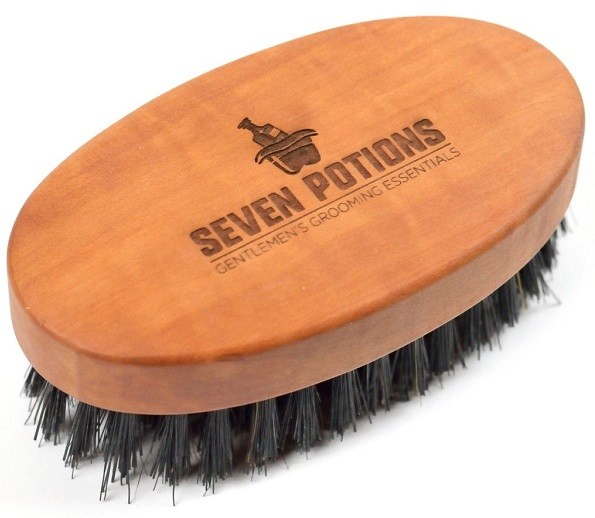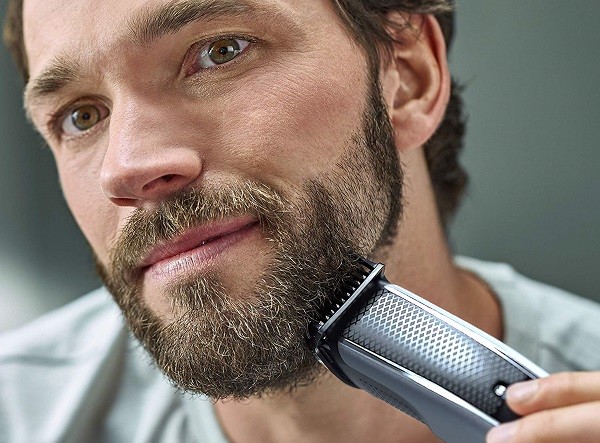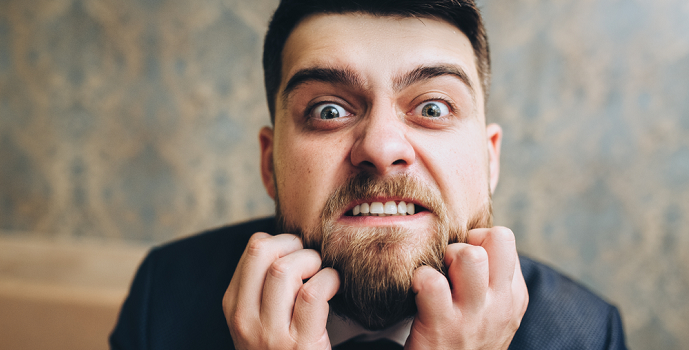Nothing says “manly” like a full beard – practically bristling with masculine power, letting the world know its wearer is comfortable in his own skin.
Until, that is, it starts to itch, and the image of self-confident comfort is shattered by the constant scratching of one’s chin.
Beard itch is a common complaint, especially among the newly bearded.
The sensation eventually subsides – but until then, what’s a guy to do?
Have no fear, fellow bearded brother. Read on, and learn how to stop beard itch in its irritating tracks.
What Causes Beard Itch?
Remember the old myth, that shaving makes hair grow thicker?
Sadly, it’s just that: a myth.
What shaving does guarantee, however, is an itchy beard. When facial hair – the toughest hair on your body – gets lopped off by a razor-sharp blade, its normally soft tips turn pointy and hard.
And when your beard grows… well, imagine hundreds of tiny, wiry spears, poking through your skin. Itchiness is inevitable.
New beards are often dry, too. Dry, flaky skin (yes, beard dandruff is a real thing) itches – and beards, especially when new and rough, act a bit like Velco, attracting food particles (another reason to always chew with your mouth closed!) and other debris.
The Solution to Stopping Beard Itch

We’ve covered the ‘why’; let’s move on to the ‘how’. Too many guys give up on what could be a great beard merely because of the initial discomfort.
Don’t be one of them. Beard itch can be stopped! How?
Keep it Clean
Cleanliness is paramount to a comfortable, itch-free beard.
You wouldn’t go a week without washing your armpits or groin; nor should you neglect the hair on your face.
Between bits of last night’s dinner and this morning’s breakfast, the constant shedding and renewal of skin, and lint from your favorite pullover, it’s little wonder that an unclean beard can itch.
Remember, not any old soap will do. Choose a beard-friendly shampoo, designed for the hair on your face.
Beard shampoo is specially formulated to clean your beard without stripping away too many oils.
Full beards should be washed every second or third day, though individual needs will vary. Washing too frequently will dry your beard out. Use warm – not hot – water, and dry with a clean towel.
And in Top Condition
Beard conditioner helps your beard stay soft, smooth and hydrated. A well-conditioned beard itches less, is easier to style, and is less prone to split ends.
Don’t over-condition, though – doing so may weigh your beard down and impede the absorption of other products.
Just Add Beard Oil…

Key to taming the itch, a quality beard oil nourishes and softens facial hair, instantly relieving dryness and irritation.
Look for beard oil made with natural ingredients, including safe, non-comedogenic (non-pore clogging) carrier oils, and hair-stimulating essential oils – many of which happen to impart a manly, woodsy scent!
…And Drop a Balm
Beard oil and balm, though to an extent similar in composition, are not the same. Balm is thicker in consistency, and functions much like a leave-in conditioner. Beard balm softens and nourishes, but also seals in moisture and adds shape.
Brush or Comb It…

Left unbrushed, the hair on your head would turn into a knotted, unruly mess.
Your beard is the same – in fact, it may be worse, given its toughness and divergent growth. So break out a brush – or comb – and give the ol’ beard a good going over.
Regular brushing improves texture, and encourages hair to grow in one direction, reducing itchiness and making your beard easier to trim.
Always use a quality boar-bristle beard brush (found in the best beard grooming kits) – and not one intended to apply shaving cream!
Beard brushes are usually square or oval in shape, allowing the full, broad face of the brush to make contact with your beard.
Boar bristles are cut to varying lengths, and are stiffer than badger hair. Brush your beard when dry or just lightly damp, not sopping wet. Apply beard oil before brushing.
Some guys favour a beard comb over a brush. Good beard combs are typically made from wood, and usually have broadly spaced teeth that prevent tugging and help pull apart knots.
Some combs are made from cellulose acetate – an attractive plastic, often hand-polished to a high sheen. Whichever type of comb you choose, ensure that the teeth are not too tightly spaced.
Beat the Beard Itch With Trimming

It’s tempting to trim a new beard, but hold your horses.
Unless you’ve been blessed with dense, even facial hair, chances are that your beard needs a bit of time to show its full potential.
So let it grow – for a while. You’ll know when it’s really time to break out the grooming tools.
Scissors are by far the most economical option, and adequate for snipping away at errant hairs.
But to even out erratic growth or define a shape, reach for a high-quality electric beard trimmer.
Choosing the best beard trimmer requires a bit of research, but an abundance of options exist, and you’ll find the right trimmer for your needs.
When trimming, start slow – you can cut it off, but you can’t put it back! Use a comb guard, and err on the side of one that’s too long.
Begin by cutting hairs which protrude, and adjust your cutting length shorter as you progress. If you find any ingrown hairs, don’t be afraid to tweeze them out.
Feed Your Beard From Within
“You are what you eat” is by now a tired expression, but one that bears repeating. There’s a strong correlation between the state of your hair and your overall health.
A whole, unprocessed, nutrient-rich diet will help your beard look and feel its best.
- Consume foods that contain plenty of biotin—such as mushrooms, eggs, cauliflower, spinach and sweet potato.
- Chow down on Vitamins C and E – found in citrus fruits, tomatoes, spinach, peppers and squash, and nuts, seeds and leafy greens.
- Munch on foods rich in Vitamin A – like eggs, milk and orange fruits and veggies.
- Don’t forget about vitamin B – found in foods such as meat, legumes, whole grains, and nuts and seeds.
- Get a healthy dose of essential fatty acids from low-mercury fatty fish, cod liver oil, flax seed and pastured beef.
The right combination of nutrients encourage healthy sebum production, promote hair growth, prevent hair loss and keep hair from drying out. Supplements can help, too, but start with the right diet—it’s the foundation of healthy hair.
Let’s Wrap this up
By now, you should be well-equipped to stop beard itch.
Doing so requires a little time and care, but the end result – a full, soft, comfortable beard that looks as good as it feels – is well worth the effort.
